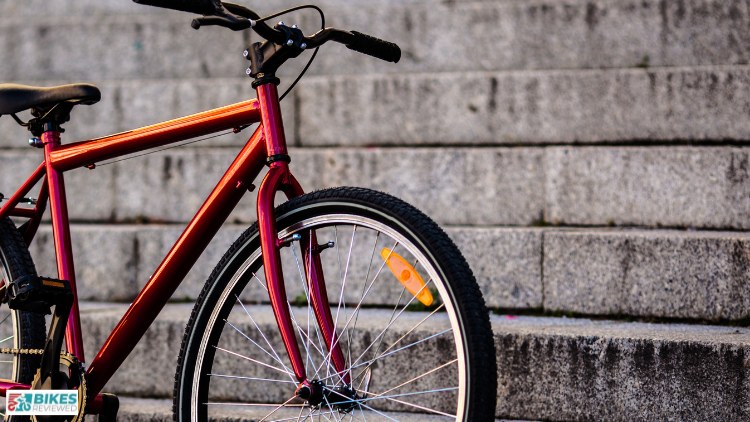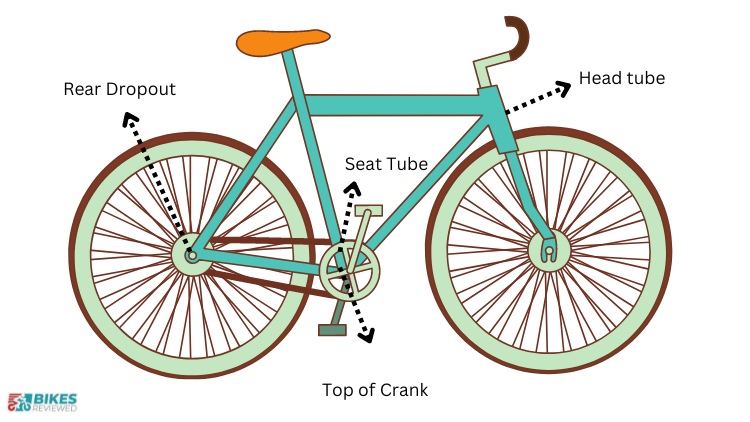Bike enthusiasts often underestimate the importance of a seemingly mundane detail—the bike serial number. This tiny combination of digits, often overlooked, holds significant weight in the realm of bicycle ownership.
Beyond being a mere identifier, a bike's serial number is a crucial element that plays a pivotal role in theft prevention and recovery. In this discussion, we will delve into the world of bike serial numbers.
Unraveling their purpose and the various reasons why every bike owner should be intimately acquainted with this unique code.
What is Bike Serial Numbers?
A bike serial number, often referred to as a bike frame number, serves as a distinct identifier for a bicycle. Ranging from 6 to 10 digits, these numbers are not just random combinations; they are unique codes that set each bike apart from the rest.
The importance of this serial number becomes apparent when we consider its role in tracking down stolen or missing bikes.
Locating the bike serial number is the first step to leveraging its significance. The placement of serial numbers varies among different types of bikes, including road bikes, mountain bikes, and others.
For road bikes, the serial number is commonly found under the bottom bracket, the area where the two pedals join. On mountain bikes, checking the underside of the crank, the headset, rear stays, the seat downtube next to the crank, or the top of the crank reveals the elusive serial number.
According to a study by the National Insurance Crime Bureau, the recovery rate for stolen bicycles stands at a disheartening 2%. However, those who know their bike's serial number significantly increase their chances of having their beloved ride returned to them.
In essence, the bike serial number serves as a proactive measure against theft. By knowing this unique code, owners contribute to creating a robust system that facilitates the swift recovery of stolen bikes.
As we continue to unravel the layers of significance surrounding bike serial numbers, we'll explore practical tips for safeguarding this vital piece of information and delve into the process of bike registration, a crucial step in fortifying the security of your two-wheeled companion.
Importance of Bike Serial Numbers

Bike serial numbers play a crucial role in safeguarding your cherished ride, not just as a means of identification, but also as a powerful tool in preventing theft and aiding in recovery.
Theft Prevention
The uniqueness of bike serial numbers is akin to a fingerprint for your bicycle. Each serial number is distinct, acting as a special code that sets your bike apart from all others. This distinctiveness becomes a shield against theft, making it harder for unscrupulous individuals to steal and resell bikes.
The serial number acts as a red flag, signaling to potential buyers that this bike has an identity that cannot be easily erased. This dissuades thieves, as the risk of being caught and identified increases significantly.
The importance of serial numbers in theft prevention cannot be overstated. When bike owners become aware of their unique serial numbers, they contribute to building a community that discourages theft. Thieves prefer anonymity, and a widely informed public becomes a formidable force against bike theft.
Recovery Process
In the unfortunate event that a bike is stolen, the recovery process hinges on the bike's serial number. Reporting a stolen bike is a collaborative effort involving law enforcement, bike shops, and online platforms.
Law enforcement agencies play a pivotal role. When a bike owner reports a theft with the serial number, it acts as a starting point for the authorities. The serial number becomes a reference in databases, allowing law enforcement to identify and recover stolen bikes more efficiently.
Online platforms also contribute to the recovery process. Websites and forums dedicated to selling bikes often cooperate with law enforcement, regularly checking and cross-referencing serial numbers against reported thefts. This virtual vigilance helps create a digital barrier for thieves attempting to sell stolen bikes online.
Where to Find Your Bike's Serial Number

Your bike's serial number is like its unique fingerprint, and finding it is crucial for various reasons, especially if you ever need to report it as stolen or for warranty purposes. Here's a simple guide to help you locate the serial number on different bike models:
Under the Bottom Bracket
The bottom bracket is where the pedals connect to your bike. Look for a set of numbers etched or stamped on the metal surface. This is a common location for serial numbers and can range from 6 to 10 digits.
Seat Tube
Check the tube that connects your bike's saddle to the frame. The serial number might be positioned along the side, usually near the bottom. It's a bit like a secret code that ensures your bike is uniquely identified.
Rear Stays
Move towards the rear wheel, and you might find the serial number on the rear stays, the frame sections that extend from the seat tube to the rear wheel dropouts. These numbers are often discreet but play a crucial role.
Seat Downtube Next to the Crank
This location is near the pedals but on the part of the frame that slopes down from the saddle. The serial number could be on the side facing the ground. It's like a secret code that ensures your bike is uniquely identified.
Top of Crank
Examine the top of the crank, the part where your pedals attach. Serial numbers can be etched or stamped onto this area. Take a close look, and you might uncover this hidden identifier.
The serial number is your bike's identity, and knowing where to find it is like having a secret key to unlock important information about your two-wheeled companion.
Also Read - What are Various Types of Bike Brakes
Registering Your Bike
Now that you've located your bike's serial number, the next crucial step is registering it. Think of it like creating an ID for your bike in case it ever goes missing or needs attention. Here's why it's essential:
Chances of Recovery
Registering your bike significantly increases the chances of recovery if it gets lost or stolen. It's like giving your bike a voice that can be heard across communities.
Insurance Benefits
If you have bike insurance, the registered serial number serves as proof of ownership. In case of an unfortunate event, this proof is your ticket to claiming insurance benefits.
Discounts and Additional Security
Some insurance services offer discounts for registered bikes. Additionally, you might receive a registration sticker that acts as a visible deterrent to potential thieves.
Easy Registration Platforms
Registering your bike is a breeze with platforms like Bike Register, 529 Garage, Project 529, and local police departments. It's a small effort that pays off in the long run.
Alternative Registration without Serial Numbers:
Can't find your serial number? No worries. Contact a bike registration company for a registration kit. The waterproof sticker inside serves as proof of ownership even without the serial number.
Taking these steps ensures that your bike is not just a mode of transportation but a protected and recognized part of your life. Don't delay—register your bike today and give it the security it deserves.
Also Read - How To Break Chain Using Chain Breaker Tool?
Additional Tips and Considerations
Maintaining a record of your bike's purchase details is a smart move. Keep a digital or physical record of where and when you bought your bike, along with the receipt if possible. This information can be handy for insurance claims and proving ownership.
For added security, consider engraving or adding a unique identifier to your bike. This can be your initials, a special symbol, or a combination of both. Engraving not only makes your bike distinct but also deters thieves, as it becomes harder for them to sell or dispose of a visibly marked bike.
Also Read - How To Remove Rust from Bike
What We Concluded?
In wrapping up, it's essential to recognize the significance of bike serial numbers. These seemingly small combinations of digits act as your bike's unique identity card, crucial for recovery in case of theft.
Taking proactive steps to protect your bike involves more than just locking it securely. It's about understanding and utilizing the unique identifier that your bike carries.
Here's a quick recap of the steps you can take:
Explore the common locations, including the bottom bracket, seat tube, rear stays, and the top of the crank. Don't forget to check for manufacturer-specific prefixes.
Keep a record of your bike's purchase details, including where and when you bought it. This information can be crucial for insurance claims and proof of ownership.
Consider engraving your initials or adding a unique identifier to your bike. This not only makes your bike easily identifiable but also acts as a deterrent to potential thieves.
Taking the time to know your bike's serial number and registering it can make a significant difference in safeguarding your beloved two-wheeler. It's a simple yet effective step towards ensuring that you are well-prepared in case of any unforeseen circumstances. Stay informed, stay secure, and enjoy your rides worry-free!
